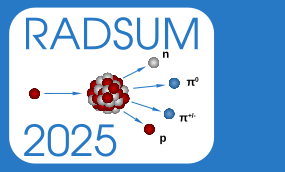Speaker
Description
High temperature superconducting (HTS) materials, such as YBa2Cu3O7-δ, will be exposed to high energy neutrons that may impact the superconducting properties and ultimately lead to degradation of the magnetic field strength. Density functional theory (DFT) calculations have been used to investigate the energetics of point defects in YBa2Cu3O7. The formation energies of point defects indicate oxygen defects are dominant, followed by Cu defects. Ba and Y defects are less likely to be produced in a radiation environment. The DFT results predict an anisotropic diffusivity of oxygen defects. Oxygen prefers to diffuse on ab planes with a vacancy mechanism, while oxygen could diffuse along c-axis with both interstitial and vacancy mechanisms at relatively high temperatures. In addition, ab initio molecular dynamics simulations of low-energy recoil events in YBa2Cu3O7 are carried out to determine the threshold displacement energies, dynamics of defect generation, and charge transfer during the process. Such computational studies, when coupled with cryogenic neutron irradiation, offer the potential to accelerate the qualification of HTS magnet materials for fusion applications.
